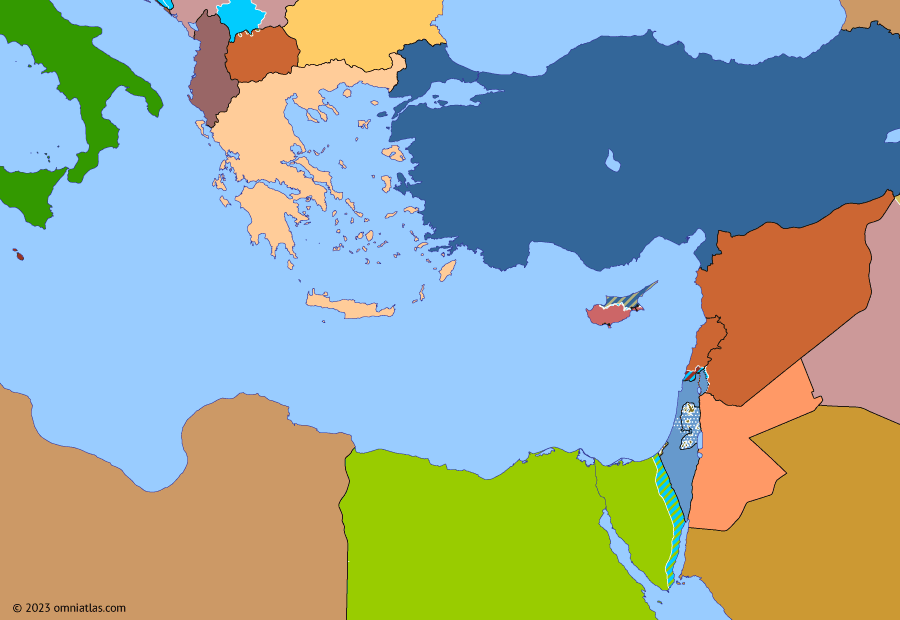Eastern Mediterranean 2001: Second Intifada
Second Intifada
22 Jul 1974 Turkish invasion of Cyprus
15 Nov 1976 Lebanese Civil War
19 Mar 1978 Operation Litani
25 May 1979 Israeli withdrawal from Sinai
22 Dec 1980 Battle of Zahlé
18 Aug 1982 1982 Lebanon War
5 Feb 1984 Multinational Force in Lebanon
19 May 1986 War of the Camps
15 Nov 1988 First Intifada
17 Sep 1991 Collapse of the Eastern Bloc
18 May 1994 Palestinian National Authority
14 Mar 1997 Anarchy in Albania
20 Mar 2001 Second Intifada
22 Jul 2006 2006 Lebanon War
14 Jun 2007 Hamas’s takeover of Gaza
16 Jan 2009 Operation Cast Lead
Discussions between Israel and the Palestinian Authority led to the authority gaining more autonomy and territory in 1995, but further talks broke down in July 2000, in part due to disagreements over the status of Jerusalem. When Israeli opposition leader Ariel Sharon publicly visited Temple Mount in Jerusalem in September, the Palestinians were outraged and broke into rioting. Palestinian unrest lasted until 2005, when both sides finally negotiated an armistice.
This map has in-depth notes in the Journal, exclusive to Patrons on Classical Tier and above. Find them in the events descriptions, marked with the Journal icon .
